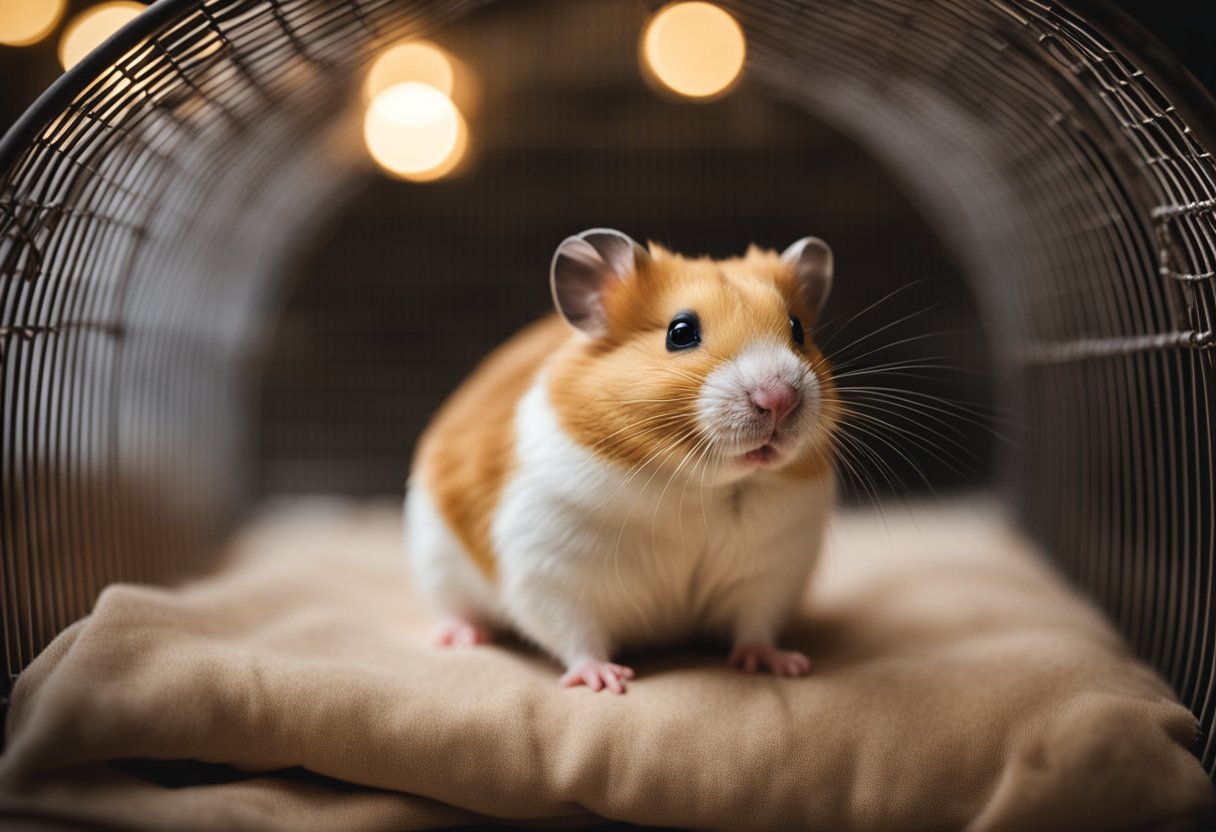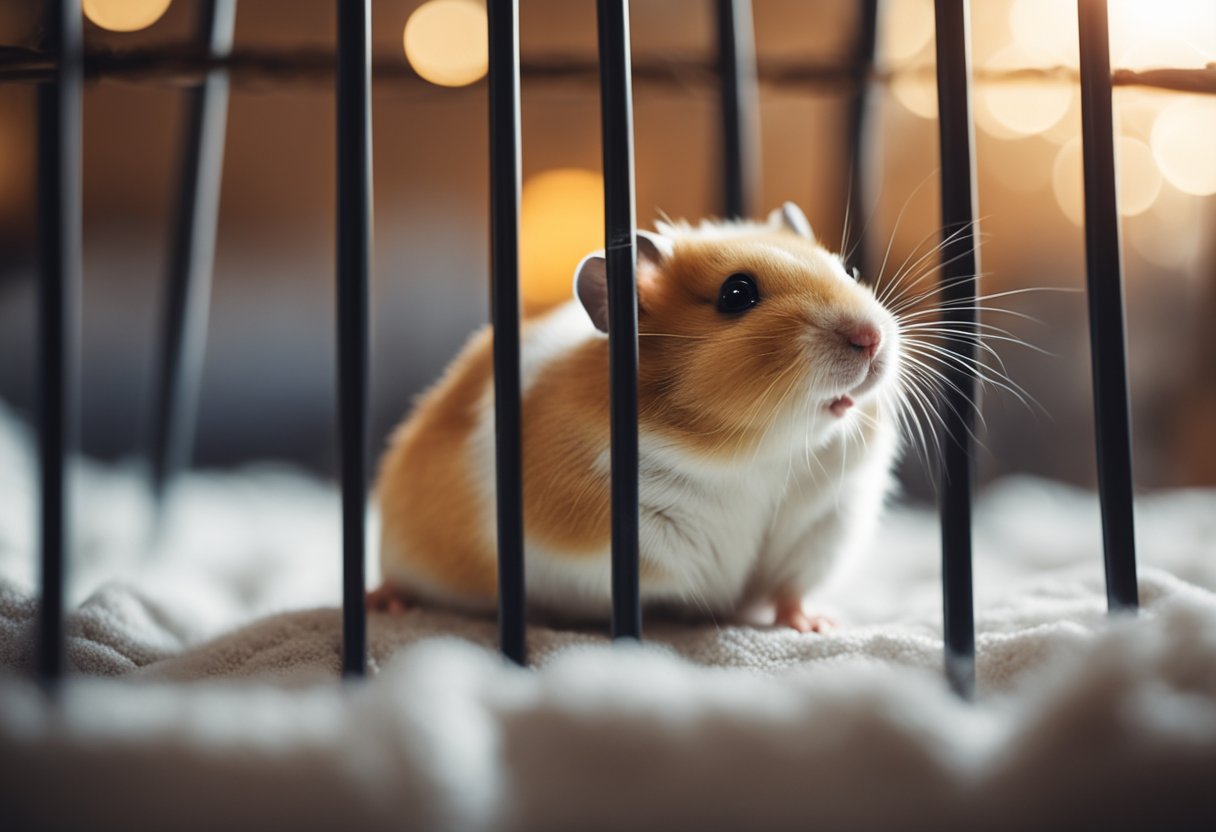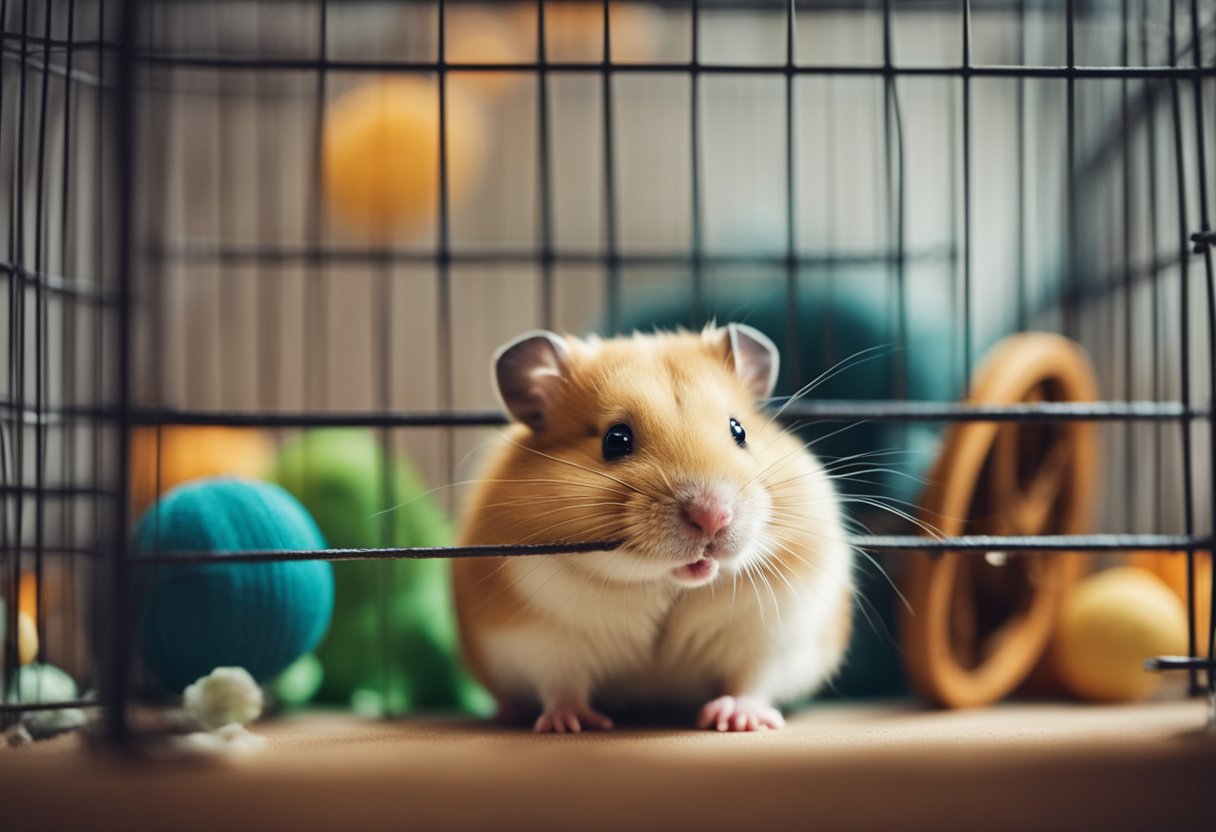How to Calm a Scared Hamster: Tips and Tricks
If you’re a hamster owner, you may have noticed that your furry friend can get scared easily. Loud noises, sudden movements, or unfamiliar people or animals can all cause your hamster to feel anxious and stressed. As a pet parent, it’s important to know how to calm a scared hamster and make them feel safe and secure.

Understanding Hamster Behavior Hamsters are prey animals, which means they’re naturally cautious and easily frightened. When they feel threatened, they may freeze, hide, or try to escape. It’s important to respect your hamster’s boundaries and give them space when they’re feeling scared or stressed.
Calming Techniques for Hamsters There are several things you can do to help calm a scared hamster. First, create a quiet and secure space for your hamster away from loud noises and sudden movements. Offer a hiding place, like a cozy hideout or tunnel, where your hamster can retreat when feeling overwhelmed. Additionally, handle your hamster gently and avoid picking them up suddenly. Playing relaxing music or offering treats can also help calm your hamster down.
Key Takeaways
- Hamsters are naturally cautious and easily frightened, so it’s important to respect their boundaries and give them space when they’re feeling scared or stressed.
- Creating a quiet and secure space for your hamster, offering a hiding place, and handling them gently can all help calm a scared hamster.
- Playing relaxing music or offering treats can also help your hamster feel more relaxed and secure.
Understanding Hamster Behavior

Hamsters are adorable little creatures, but they can be quite skittish. Understanding their behavior can help you identify when your hamster is scared or stressed and take steps to calm them down.
Recognizing Signs of Fear
Hamsters can show a variety of signs when they are scared or anxious. Some common signs include excessive hiding, aggressive behavior like biting or shaking, and changes in eating or sleeping patterns. They may also freeze or attempt to escape when frightened.
It’s important to note that not all hamsters will display the same signs of fear. Some may be more vocal, while others may simply hide. It’s up to you to observe your hamster’s behavior and determine what is normal for them.
Factors That Cause Stress in Hamsters
There are several factors that can cause stress in hamsters. Some of the most common include:
- Loud noises and sudden movements
- Lack of socialization
- Poor diet or lack of exercise
- Dirty living conditions
- Illness or injury
By identifying the factors that are causing your hamster to be stressed, you can take steps to address the issue and calm them down. For example, if your hamster is stressed because of loud noises, you can create a quiet and secure space for them to retreat to. If they are stressed because of poor diet or lack of exercise, you can provide them with a healthy diet and plenty of opportunities to play and explore.
Overall, understanding your hamster’s behavior is key to keeping them happy and healthy. By recognizing signs of fear and addressing the factors that cause stress, you can help your hamster feel safe and secure in their home.
Calming Techniques for Hamsters

If your hamster is scared or anxious, it’s important to know how to calm them down. Here are some effective techniques you can use to help your hamster feel safe and secure.
Creating a Safe Environment
One of the most important things you can do to calm a scared hamster is to create a safe and secure environment for them. Hamsters are prey animals, which means they are naturally cautious and easily frightened. Make sure your hamster’s cage is located in a quiet, low-traffic area of your home. Avoid placing the cage near loud noises or sudden movements, such as a television or a busy hallway.
You can also provide your hamster with a cozy hideout or tunnel where they can retreat when feeling overwhelmed. This will give them a sense of security and help them feel more relaxed.
Handling Your Hamster Properly
When handling your hamster, it’s important to be gentle and cautious. Hamsters can be easily startled, so approach them slowly and calmly. Avoid picking them up suddenly or making sudden movements.
If your hamster seems scared or anxious, try talking to them in a soft, soothing voice. This can help them feel more at ease and less frightened.
Using Calming Aids
There are several calming aids you can use to help your hamster feel more relaxed. Playing relaxing music may help calm your hamster down whenever they seem distressed [1]. You can also try using a calming spray or diffuser that contains natural ingredients such as lavender or chamomile. These scents are known to have a calming effect on animals [2].
Another option is to provide your hamster with a calming treat, such as a piece of fresh fruit or a small amount of plain yogurt. These treats can help distract your hamster and give them something positive to focus on.
By creating a safe environment, handling your hamster properly, and using calming aids, you can help your hamster feel more relaxed and comfortable. Remember to be patient and gentle, and always prioritize your hamster’s well-being.
Resources

When it comes to calming down a scared hamster, there are several resources available that can help you. Here are a few resources that you may find useful:
- Websites: You can find several websites that offer tips and advice on how to calm down a scared hamster. For example, Fluffy Tamer suggests creating a quiet and secure space for the hamster, away from loud noises and sudden movements. They also recommend offering a hiding place, like a cozy hideout or tunnel, where the hamster can retreat when feeling overwhelmed. Another website, Pet Keen, recommends playing relaxing music to help calm your hamster down whenever they seem distressed.
- Books: There are also several books available that provide information on how to deal with scared hamsters. One such book is “Hamsters: The Essential Guide to Ownership, Care, & Training for Your Pet” by Kate H. Pellham. This book covers a wide range of topics related to hamster care, including how to calm a scared hamster.
- Veterinarians: If you are having trouble calming down your hamster, you may want to consult with a veterinarian who specializes in small animals. They can provide you with advice on how to calm down your hamster and may be able to recommend specific products, such as calming sprays or supplements, that can help.
Remember, each hamster is unique, and adapting to their individual needs is a key part of the journey. With patience, persistence, and the right resources, you can help your scared hamster feel safe and secure in their environment.
Conclusion

In conclusion, calming a scared hamster requires patience, gentleness, and understanding. By creating a safe and secure environment, providing a hiding place, and handling the hamster gently, you can help alleviate their fear and anxiety. It is important to remember that each hamster is unique and may require different strategies to calm down.
Some additional tips to calm a scared hamster include providing them with toys for exercise, speaking to them in a gentle voice, and keeping their cage in a quiet room. It is also important to monitor their behavior and look for signs of stress or fear, such as excessive hiding or aggressive behavior.
By following these tips and being attentive to your hamster’s needs, you can help them feel more comfortable and secure in their environment. Remember to always approach your hamster with care and respect, and seek veterinary assistance if you have any concerns about their health or behavior.
Frequently Asked Questions

What are effective methods to soothe a panicked hamster?
There are several effective methods to soothe a panicked hamster. One way is to create a quiet and secure space for the hamster, away from loud noises and sudden movements. You can offer a hiding place, like a cozy hideout or tunnel, where the hamster can retreat when feeling overwhelmed. Another way is to handle the hamster gently and avoid picking it up suddenly. Try to approach the hamster slowly and calmly, and let it sniff your hand before attempting to pick it up.
What signs indicate that a hamster is under stress?
There are several signs that indicate a hamster is under stress. These include excessive grooming, loss of appetite, lethargy, aggression, and excessive sleeping. If you notice any of these signs, it’s important to take steps to reduce your hamster’s stress levels.
How can you help a hamster relax at night?
Hamsters are nocturnal animals, so it’s important to provide them with a quiet and dark environment during the day. You can cover their cage with a blanket or towel to create a cozy and secure space for them to sleep. You can also provide them with a comfortable nesting material, like shredded paper or tissue, to help them feel more relaxed.
What are the steps to tame a fearful hamster?
Taming a fearful hamster takes time and patience. Start by offering your hamster treats from your hand, and allow it to approach and sniff your hand on its own terms. Once your hamster is comfortable taking treats from your hand, you can try to gently stroke its back or head. Be sure to move slowly and avoid sudden movements, as this can startle your hamster and make it more fearful.
How should you treat a hamster that has experienced trauma?
If your hamster has experienced trauma, it’s important to provide it with a quiet and secure space to recover. Avoid handling your hamster too much, and give it time to heal and regain its trust in you. You can offer it treats and talk to it in a soft and soothing voice to help it feel more comfortable. If your hamster’s behavior doesn’t improve, it’s important to seek the advice of a veterinarian.
Can a calming kit be useful for a stressed hamster, and how?
A calming kit can be useful for a stressed hamster. These kits typically include items like a cozy nest, chew toys, and calming scents that can help reduce your hamster’s stress levels. You can also provide your hamster with a variety of toys and activities to keep it occupied and engaged, which can help reduce its stress levels.
